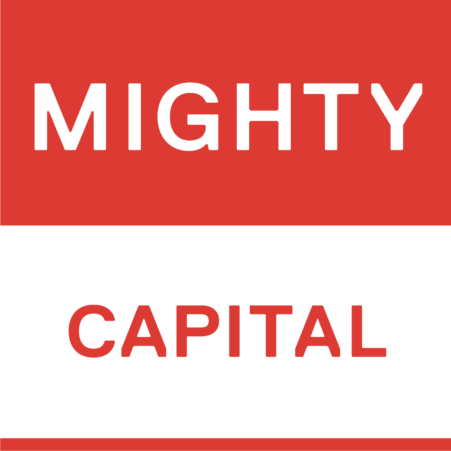In the age of digital transformation, product managers are the champions of change and customer needs. These people have the pulse of what customers want and how that translates to the products developed and updated.
As we see a need for better customer experience, especially in such a world of immediate gratification, it makes sense for the product managers to rise through the business ranks and gain a seat at the C-suite table.
There is a revolution happening in the C-suite that has been building for some time, and we are now seeing the changes. We call it CPO Rising.
The Importance of Being Product-Led
With the digital revolution, we realize how important product is. This transformation has made waves throughout the business world. Digital native and tech companies understood this, placing product at the forefront. For traditional companies, they are scrambling to reinvent themselves in a digital age, with not only products but customer experience and business models.
These adjustments have elevated a new role: Chief Product Officer.
Product managers and teams have always been present in one way or another, but this is a complete shift of priorities and mindset. This new role impacts customer acquisition, creates recurring revenue streams, changes day-to-day operations, touching every aspect of the company.
Some seeking out this role might ask, Is this the same as VP or Senior VP role? No. This new role is also a business role and has been created for someone to do more than the conventional product leader or director. CPOs are responsible for the execution of all product-related activities within the company they serve, and that has a wider reach than ever before. Though the roles and responsibilities change depending on the size of the company, the important aspect is its direct line to the CEO and is a peer to other C-titled executives. To be successful, a CPO requires 100% support from the CEO.
“A CPO is literally the only seat in the C-suite next to the CEO that touches every single function of the organization. And so to prepare yourself for the C-suite, your ability to actually understand those various functions in the context of your product is going to be really critical to your future success,” said Renee Niemi, Products That Count CPO, and formerly at Google, Plantronics, and Logitech.
Evolution of the CPO Role
2009: Behind the scenes, the role of CPO enters the C-suite of digital-native companies.
2013: Investment and tech companies ride the CPO wave: Bing Gordon becomes the CPO at American venture capital firm Kleiner Perkins. Then, Jeff Holden moved from Groupon SVP to Uber CPO, leading the charge of innovation.
2016: The primary collaborator for a CPO at this time is the VP of Engineering, so this role is still firmly about development.
2018: Traditional industries get on board to transform the customer experience. H-E-B Grocery Company hired its first Chief Product Officer, while about the same time, The Atlantic hired Alex Hardiman from Facebook as its first Chief Product Officer.
2022: The collaborations have changed: The CEO and Chief Revenue Officer (CRO) are the primary business partners, and the Chief Technology Officer (CTO) is the primary partner on the technical side.


This content is produced in partnership with Mighty Capital, a Silicon Valley venture capital firm, turning ideas with traction into products that win.
Mighty Capital
Gaining A Seat In The C-Suite
As we mentioned, CPO has gained a seat at the C-suite that has opened many doors to allow the influence to enact real change. As of January 2022, there are more than 2,000 CPO job openings on LinkedIn just for the United States.
As product managers rise through the ranks, they are required to have new skills: hiring, budgeting, leadership, learning, and, of course, all things product! About 60% of this budget is on hiring and learning, as the product teams evolve and build.
The Harvard Business Review states: “One strikingly consistent finding: Once people reach the C-suite, technical and functional expertise matters less than leadership skills and a strong grasp of business fundamentals. … [T]oday members of senior management are expected not only to support the CEO on business strategies but also to offer their own insights and contribute to key decisions.” The HBR recently published an update to the original article that adds more to the conversation – “Average C-Suite Tenure and Other Important Executive Facts – Updated for 2022“.
CPOs can thrive in this environment by honing these new skills, backed with data and metrics. Understand your metrics, understand your bottom line, understand your customers, and bring that all together to be the champion for your product.
Product leader and former Viacom/CBS Executive VP Shampa Banerjee said, “You have to be an influencer and an evangelist. You’re the chief influencer. Your product is gluing all the other functions in the company, so you need to be that person who helps become that glue. You have to evangelize both your team and your product to everyone, not just your customers, but even internally. Then you have to be a really good coach to your team.”
Join us for CPO Rising
Here at Products That Count, we are the premier source of information and discussion of all things CPO-related, allowing CPOs a place to grow, learn, and engage. Sign up for a free membership today, and stay in the know about all things CPO.
About the speaker
Products that Count is a 501(c)3 nonprofit that helps everyone build great products. It celebrates product excellence through coveted Awards that inspire 500,000+ product managers and honor great products and the professionals responsible for their success. It accelerates the career and rise to the C-suite of >30% of all Product Managers globally by providing exceptional programming – including award-winning podcasts and popular newsletters – for free. It acts as a trusted advisor to all CPOs at Fortune 1000, and publishes key insights from innovative companies, like Capgemini, SoFi, and Amplitude, that turn product success into business success.